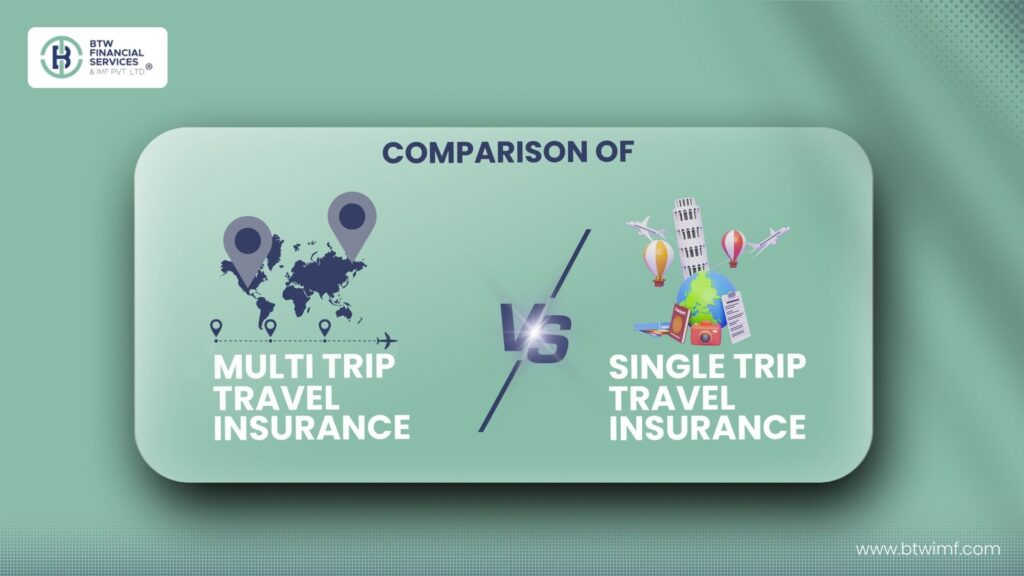Comparison of Single Trip vs. Multi Trip Travel Insurance
Summary
- Single Trip Insurance:
- Best for: Infrequent travelers (once a year or less)
- Key Benefits: Cost-effective, tailored coverage, no unused premium
- Drawbacks: Limited to one trip, higher administrative effort
- Multi Trip (Annual) Insurance:
- Best for: Frequent travelers (more than one trip within a year)
- Key Benefits: Convenient, potential for better value, less administrative hassle
- Drawbacks: Higher upfront cost, subject to per-trip duration limits
- Choosing the Right Option:
- Assess your travel plans for the year.
- Evaluate your budget and weigh costs against benefits.
- Review policy details to ensure comprehensive coverage.
- Consider consulting an insurance advisor for personalized guidance.
Table of Contents
- Introduction to Travel Insurance
- Single Trip Travel Insurance
- Definition and Overview
- Key Features
- Coverage Benefits
- Pros and Cons
- Multi Trip (Annual) Travel Insurance
- Definition and Overview
- Key Features
- Coverage Benefits
- Pros and Cons
- Choosing the Right Option for You
- For Infrequent Travelers
- For Frequent Travelers
- Before Making Your Final Decision
- Additional Considerations
- Policy Exclusions and Limitations
- Claims Process
- Frequently Asked Questions (FAQs)
- Conclusion
1. Introduction to Travel Insurance
Travel insurance is a crucial aspect of trip planning, offering financial protection against unforeseen circumstances such as trip cancellations, medical emergencies, travel delays, and lost or stolen luggage. Two primary types of travel insurance cater to different traveler needs: Single Trip Travel Insurance and Multi Trip (Annual) Travel Insurance.
2. Single Trip Travel Insurance
- Definition and Overview:
- Designed to cover a single trip or vacation from departure to return, for a specified duration.
- Tailored to the specific details of your one-off trip.
- Key Features:
- Coverage Period: Limited to the duration of the specified trip.
- Premium Cost: Generally less expensive than Multi Trip policies for the same level of coverage.
- Eligibility: Suitable for individuals who travel infrequently, typically once a year or less.
- Coverage Benefits:
- Trip Cancellation/Interruption
- Medical Emergencies
- Travel Delays
- Lost/Stolen Luggage
- Emergency Evacuation
- Pros:
- Cost-Effective for Infrequent Travelers
- Tailored to Specific Trip Needs
- No Unused Coverage
- Cons:
- Limited to One Trip
- Must Purchase Again for Next Trip
3. Multi Trip (Annual) Travel Insurance
- Definition and Overview:
- Provides coverage for multiple trips within a 12-month period from the policy’s effective date.
- Each trip is subject to a maximum duration limit (commonly 30, 60, or 90 days per trip).
- Key Features:
- Coverage Period: Covers all trips for 12 months from the start date, with each trip subject to its own duration limits.
- Premium Cost: More expensive upfront, but can offer better value if you take multiple trips within the year.
- Eligibility: Ideal for frequent travelers who anticipate taking more than one trip within a year.
- Coverage Benefits:
- Similar to Single Trip Insurance, with possible enhancements:
- Comprehensive Trip Cancellation Reasons
- Increased Limits for High-Value Items
- Similar to Single Trip Insurance, with possible enhancements:
- Pros:
- Convenient for Frequent Travelers
- Potential for Better Value with Multiple Trips
- Less Administrative Effort
- Cons:
- Higher Upfront Cost
- May Not Be Cost-Effective if You Take Only One Trip
- Maximum Trip Duration Limits Apply
4. Choosing the Right Option for You
- For Infrequent Travelers (Once a Year or Less):
- Recommended: Single Trip Travel Insurance
- Why: Cost-effective, tailored to your specific trip needs, and ensures you don’t pay for unused coverage.
- For Frequent Travelers (More Than One Trip Anticipated Within a Year):
- Recommended: Multi Trip (Annual) Travel Insurance
- Why: Offers convenience, potential for better value with multiple trips, and less administrative effort with a one-time purchase.
- Before Making Your Final Decision:
- Assess Your Travel Plans: Estimate how many trips you’ll take within the next year.
- Evaluate Your Budget: Weigh the upfront costs against the potential benefits and savings.
- Review Policy Details: Ensure the chosen policy covers all necessary aspects of your trips.
- Consult with an Insurance Advisor: If unsure, seeking professional advice can provide personalized guidance.
6. Additional Considerations
- Policy Exclusions and Limitations:
- Pre-existing medical conditions
- Adventure activities
- Travel to high-risk areas
- Claims Process:
- Similarities: prompt notification, documentation required
- Differences: Single Trip – one-time event; Multi Trip – annual policy usage review
- Frequently Asked Questions (FAQs):
- Can I upgrade from Single Trip to Multi Trip?
- Are all destinations covered under Multi Trip policies?
- Can I purchase a Multi Trip policy for a family?
7. Conclusion
Selecting the right travel insurance policy is crucial for protecting your trips against unforeseen circumstances. By carefully evaluating your travel habits, budget, and specific needs, and comparing Single Trip and Multi Trip Travel Insurance options, you can make an informed decision that ensures peace of mind for all your journeys. Remember to assess your travel plans, evaluate your budget, review policy details, and consider consulting with an insurance advisor to find the perfect fit for you.




